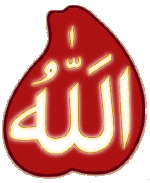|
|
|
|
| "Bayt al-Huzn" (The House of Sorrow) where
Imam Zaynul Abidin [a] used to come and weep after the tragedy of
Karbala. (The Bayt al-Huzn of Sayyida Fatima [a] has been completed
demolished by the Saudi govt.). This house is in the garden of Salman,
the Prophet's [s] companion. Salman was a slave working in this
date farm before the Prophet [s] freed him. |
"Bayt al-Huzn" (The House of Sorrow) where
Imam Zaynul Abidin [a] used to come and weep after the tragedy of
Karbala. (The Bayt al-Huzn of Sayyida Fatima [a] has been completed
demolished by the Saudi govt.). This house is in the garden of Salman,
the Prophet's [s] companion. Salman was a slave working in this
date farm before the Prophet [s] freed him. |
"Bayt al-Huzn" (The House of Sorrow) where
Imam Zaynul Abidin [a] used to come and weep after the tragedy of
Karbala. (The Bayt al-Huzn of Sayyida Fatima [a] has been completed
demolished by the Saudi govt.). This house is in the garden of Salman,
the Prophet's [s] companion. Salman was a slave working in this
date farm before the Prophet [s] freed him. |
|
|
|
|
The white house with a blue top border is called "Bayt
Bint al-Yahud". Sayyida Fatima az-Zahra [a] once attended the
wedding of a Jewish lady here. The bride died and with the prayers
of Sayyida [a], she came back to life.
|
"Bir-e-Ali" or the Well of Ali [a]. When
returning from an expedition, the army of Imam Ali [a] once ran
out of water. He dug this well from which water continues to flow
even today. This place is not too far from Masjid Shajarah (Miqat)
|
Masjid Fadheek. When the verse prohibiting intoxicants
was revealed, some Muslims hid wine in a well here. To disgrace
them, some hypocrites complained to the Prophet [s] about this.
When the Prophet [s] opened this well, the wine had miraculously
changed into vinegar. The well is shown below. Behind this mosque
is the Garden of Fadak that the Prophet [s] had given his daughter
Fatima [a]. This was usurped from her after his leaving this world. |
|
|
|
|
The well in the mosque of Fadheek where
wine turned to vinegar
|
Masjid Fath (mosque of victory) where
the Prophet [s] prayed during the Battle of Khandaq. At the top
of a mount, this is one of "the five mosques" around that
area
|
Masjid Ghamama. Also called Masjid Eid
because the Prophet [s] prayed the Eid Prayers (salatul Eid) here.
During a drought, the Prophet [s] once also prayed for rain here
(salatul istisqa) - giving the "wasta" of his grandson
Husayn b. Ali [a] |
|
|
|
|
|
|
Hamza, the uncle of the Prophet [s], was martyred
at Uhud at the foot of this hill. Some say this is the reason
why the rock at the foot of the hill is red in colour as compared
to the rest of the hill.
|
|



